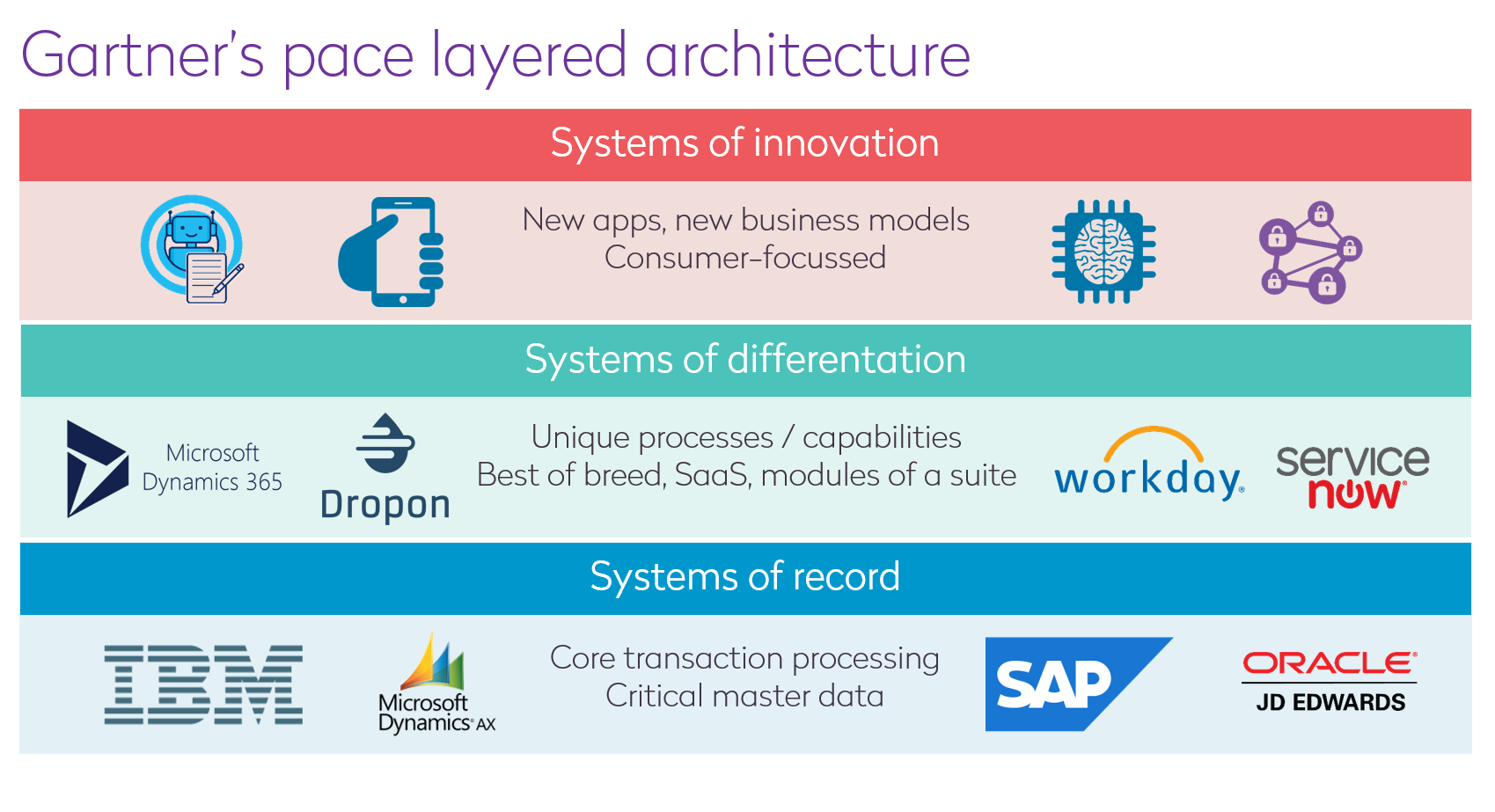With the right approach, you can accelerate your innovative and differentiating business while advancing your backend at a slower pace. The key for getting your IT “up to speed” is simply finding the right rate at which you should modify each of your systems.
As defined in Gartner’s glossary, pace layering is “a methodology for categorizing, selecting, managing and governing applications to support business change, differentiation and innovation.” Using this approach enables you to make the most of your architecture and every module by evolving each at the pace most appropriate for its individual function and needs.
Pace layering is about organizing architecture change, basing it on modules’ specific requirements to adapt them individually – and more efficiently. To bring more visibility to the structure, the pace layered architecture classifies systems into three decipherable layers: record, differentiation, and innovation:

Record: Serving as the base for all operations, systems of record sit on the bottom of the architecture hierarchy, managing critical master data and processing core transactions.
Differentiation: These mid-level systems are typically tailored SaaS applications or part of a complete suite and have unique processes and capabilities, such as improved customer support. While once similar across most organizations, this stack is now more often specific to each company’s objectives.
Innovation: Sitting at the top level, these customer-facing systems are where companies can truly make the difference against the competition – allowing them to be creative and explore new business models.
Gartner’s pace layering strategy isn’t a new idea. A long-standing fundamental concept, this approach has simply fallen out of sight and should be given another look by organizations looking to modernize their IT landscape.
Now that you understand the concept, download our guide to the future of integration, to discover more.
Subscribe to our RSS feed